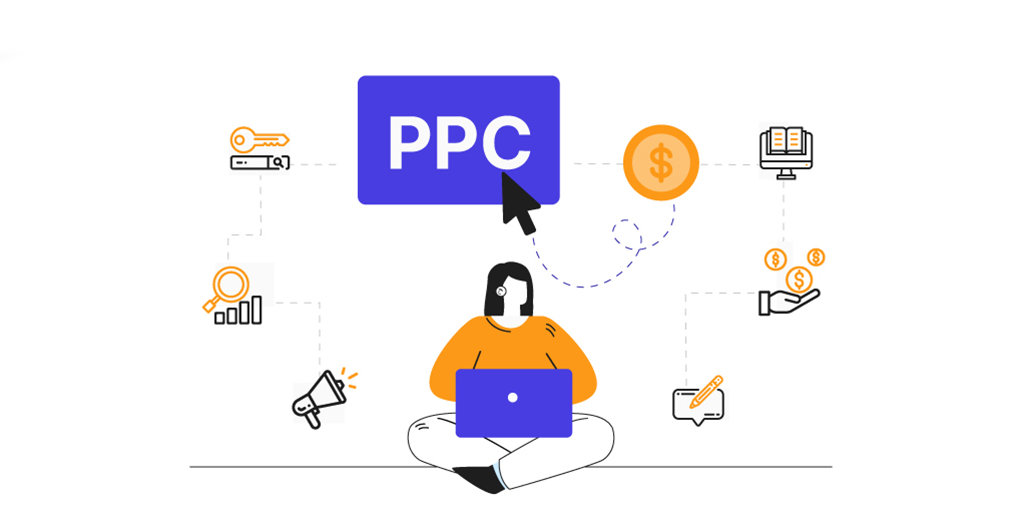In today’s digital marketing landscape, Pay-Per-Click (PPC) advertising is one of the most effective tools for businesses to drive traffic, generate leads, and increase sales. PPC allows companies to reach their target audience by displaying ads across search engines, social media platforms, and other websites, where advertisers pay only when someone clicks on the ad. However, running a successful PPC campaign requires more than just setting a budget and placing ads. It involves careful planning, strategic execution, and ongoing optimization.
This blog will explore the best practices for creating a successful PPC campaign, from initial planning to achieving profitability.
- Define Clear Campaign Objectives :
Every successful PPC campaign starts with a well-defined objective. With clear goals, measuring success or making data-driven decisions becomes difficult when launching your PPC campaign; ask yourself:
- What is the primary goal of the campaign?
- Is it to increase website traffic, generate leads, or drive online sales?
- Who is your target audience?
- Who are you trying to reach with your ads? What are their demographics, interests, and behaviours?
- What key performance indicators (KPIs) will measure success?
- Common KPIs include click-through rates (CTR), conversion rates, and return on ad spend (ROAS).
Defining specific goals will help guide every step of your PPC campaign and ensure that your efforts align with your business objectives.
- Perform Thorough Keyword Research :
Keyword research is the foundation of any successful PPC campaign, especially regarding search engine ads (e.g., Google Ads). Choosing the right keywords will ensure your ads are shown to the right audience at the right time.
- Start with Broad Keywords: Research broad keywords related to your products or services. You can use tools like Google Keyword Planner, SEMrush, or Ahrefs to find popular search terms within your industry.
- Refine with Long-Tail Keywords: While broad keywords can attract a large volume of traffic, long-tail keywords (phrases with three or more words) tend to attract more qualified leads because they reflect more specific search intent. For example, instead of targeting “running shoes,” a more targeted keyword could be “best-running shoes for marathon training.”
- Negative Keywords: Remember to identify negative keywords, which are search terms you want to exclude from your campaign. This helps ensure your ads don’t appear for irrelevant searches, saving you money on unqualified clicks.
Effective keyword research ensures that your ads are triggered by relevant searches, leading to higher conversion rates and better return on investment (ROI).
- Create Compelling Ad Copy and Design :
The success of your PPC campaign also depends on the quality of your ad copy and design. Your ad must stand out in a crowded space and compel users to click.
- Headline: Your ad headline should be attention-grabbing and convey the value proposition of your product or service. Use action-oriented language (e.g., “Get 50% Off Today” or “Discover Our Latest Collection”).
- Description: In the body of the ad, provide more detail about what you’re offering and why the user should care. Highlight your unique selling points (USPs), such as free shipping, discounts, or limited-time offers.
- Call-to-Action (CTA): Every PPC ad should have a clear call-to-action that tells users what to do next. CTAs like “Shop Now,” “Sign Up Today,” or “Get Your Free Quote” drive engagement and encourage conversions.
- Ad Design: Visual elements are crucial for running display ads on social media or other websites. Use high-quality images or videos that are visually appealing and consistent with your brand identity.
Crafting strong copy and appealing visuals will help increase your ad’s click-through rate (CTR), leading to more conversions.
- Optimize Landing Pages :
Once users click on your PPC ad, they’ll be directed to a landing page, and this page is where conversions happen. A poorly optimized landing page can result in high bounce rates and lost opportunities. Here’s how to optimize your landing page for better results:
- Consistency: Ensure your landing page matches the ad’s content and design. If the ad promotes a specific product or offer, make sure the landing page prominently features that same product or offer.
- Clear Messaging: Keep your messaging clear, concise, and focused. Avoid clutter and distractions. The user should immediately understand the page’s purpose and what action you want them to take.
- Fast Load Time: Slow-loading landing pages can drive users away, especially on mobile devices. Make sure your landing page loads quickly to ensure valuable traffic is maintained.
- Strong CTA: Like your ad, your landing page needs a compelling call to action. Whether filling out a form, purchasing or signing up for a newsletter, make the CTA easy to find and execute.
A well-designed and optimized landing page can significantly increase your conversion rate, maximizing the value of your PPC traffic.
- Set a Smart Budget and Bidding Strategy :
Budgeting and bidding are crucial components of any PPC campaign. You’ll need to allocate your ad spend wisely and choose the right bidding strategy to maximize your results without overspending.
- Set a Daily Budget: Decide how much you will spend daily for your campaign. Keep in mind that you can adjust your budget as you monitor performance.
- Choose the Right Bidding Strategy: Most platforms, like Google Ads, offer a variety of bidding strategies, including cost-per-click (CPC), cost-per-impression (CPM), and cost-per-acquisition (CPA). Choose a plan that aligns with your goals:
- CPC: Best if you want to drive traffic to your website.
- CPA: Ideal if your goal is to generate leads or conversions.
- CPM: Useful if you’re focused on brand awareness and visibility.
- Monitor Your Spend: Regularly track how much of your budget is used and adjust your bids based on performance. Increase bids for high-performing keywords or decrease bids for underperforming ones.
A smart budgeting and bidding strategy ensures you get you’re the most out of your PPC investment.
- Continuously Monitor and Optimize Performance :
Once your PPC campaign is live, your work is far from over. Continuous monitoring and optimization are essential to maintaining profitability and ensuring your campaign achieves its goals.
- Track Key Metrics: Use analytics tools to track essential metrics such as CTR, conversion rate, cost per click, and return on ad spend (ROAS). These insights will help you understand which aspects of your campaign are working and where improvements are needed.
- A/B Testing: Experiment with different versions of your ad copy, headlines, landing pages, and CTAs to see which variations perform better. This process of A/B testing helps you refine your approach and improve overall campaign performance.
- Adjust Keywords: Continuously refine your keyword list based on performance data. If specific keywords aren’t generating results, consider removing them and replacing them with more relevant terms.
- Optimize for Mobile: With significant web traffic coming from mobile devices, ensure that your ads and landing pages are fully optimized for mobile users.
Ongoing optimization ensures that your campaign evolves with your audience and market trends, allowing you to maintain high performance and profitability over time.
Conclusion: From Planning to Profit
Running a successful PPC campaign requires careful planning, creative execution, and constant optimization. You can drive high-quality traffic and conversions by setting clear objectives, performing thorough keyword research, creating compelling ad content, and optimizing your landing pages. Moreover, with the proper budget, bidding strategies, and continuous monitoring and adjustments, you can ensure that your PPC campaigns deliver consistent profits.
By following these best practices, businesses can turn PPC advertising into a powerful driver of growth and success, maximizing their return on investment and staying ahead in today’s competitive digital landscape.
To learn more or to acquire our services, please contact us at https://paypercampaign.com





